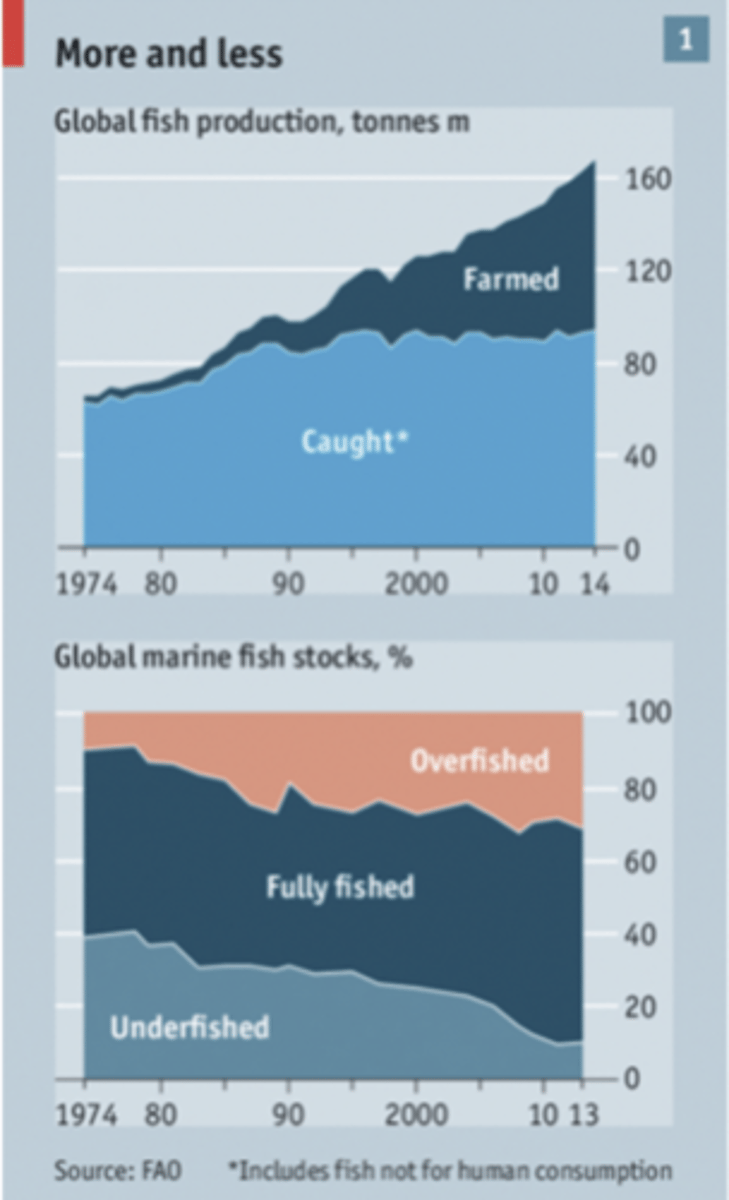Marine Biology: Ecosystems and Coral Reefs Overview
1/84
There's no tags or description
Looks like no tags are added yet.
Name | Mastery | Learn | Test | Matching | Spaced |
|---|
No study sessions yet.
85 Terms
Ecology
The study of the relationships between organisms and their environment.
Abiotic factors
Non-living components of an ecosystem, such as temperature, water, sunlight, soil, etc.
Ecosystems
Interconnected communities of living organisms and their physical environment.
Competition
Interaction between organisms where both compete for limited resources.
Predators/Prey
Predators hunt and consume other organisms (prey) for sustenance.
Symbiosis
Close and long-term interaction between different species, often benefiting one or both.
Benthic organisms
Organisms that live on or near the bottom of a body of water.
Pelagic organisms
Organisms that live in the open ocean away from the bottom.
Plankton
Microscopic organisms that float or drift in water and are unable to swim against currents.
Heterotrophs
Organisms that cannot produce their own food and must consume other organisms for energy.
Logistic growth
A type of population growth characterized by a carrying capacity.
Food web
Illustrates the complex, interconnected relationships between organisms in an ecosystem, including multiple feeding interactions and alternative pathways for energy flow.
Energy flow in food web
Energy is lost as you move from the primary producers at the base of a food web to the top predators.
Calcium carbonate
Limestone, deposited by organisms, which creates coral reefs.
Hermatypic corals
Corals that build reefs; their polyps produce calcium carbonate skeletons.
Coral polyps
The actual organisms that create coral reefs, resembling sea anemones.
Coralline algae
Grow in rock-hard sheets on the reef, deposit large amounts of calcium carbonate.
Warmest temperature range coral can tolerate
86°F-95°F.
Effects of sediments on coral
Sediment clouds the water, cutting down on light for zooxanthellae and can smother the coral or cause disease.
Barrier reefs
Lie along the coast but occur much further offshore, separated from shore by a relatively deep lagoon.
Reef flat
The widest part of the reef, shallow, and drops gently toward the sea.
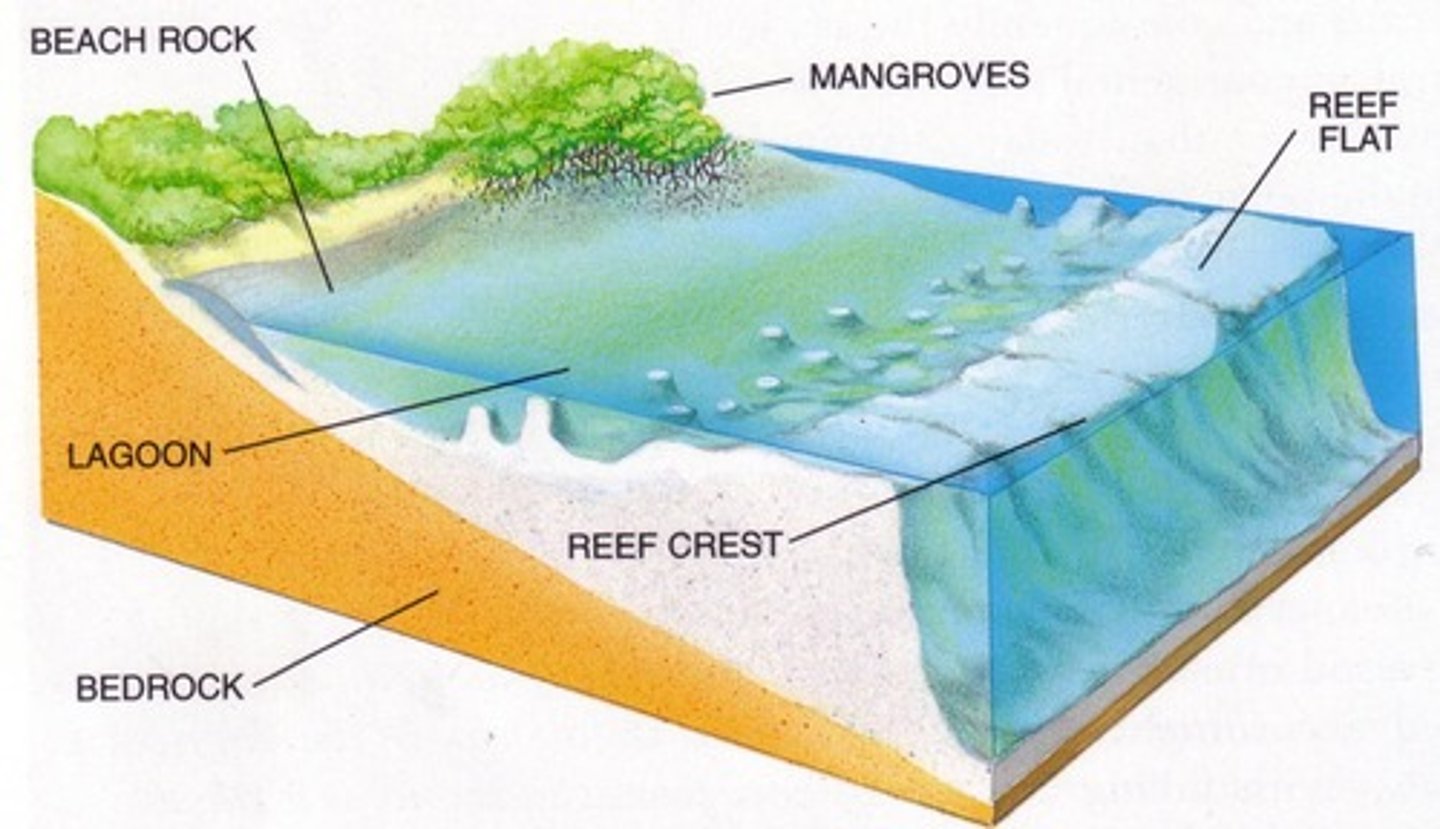
Zooxanthellae
Cells that use carbon dioxide and water to carry out photosynthesis, providing nutrients to the host coral.
Epipelagic zone
The uppermost layer of the ocean, ranging from the surface to about 200 meters deep, where most marine life is found.
Phytoplankton
Microscopic, photosynthetic organisms that form the base of the ocean food chain.
Zooplankton
Small, often microscopic animals that drift in the water, feeding on phytoplankton and other small organisms.
Meroplankton
Organisms that spend only part of their life cycle as plankton, usually as larvae or juvenile stages.
Planktivores
Animals that feed primarily on plankton, such as certain fish, whales, and jellyfish.
Sense organs
Specialized structures that allow organisms to detect and respond to stimuli from their environment, such as eyes, ears, or antennae.
Echolocation
A process used by certain animals (like bats and dolphins) to locate objects by emitting sound waves and interpreting the returning echoes.
Vertical migration
This migration occurs when organisms move up to the uppermost layer of the water at night and return to the bottom of the daylight zone of the oceans or to the dense, bottom layer of lakes during the day.
Cephalopods in the mesopelagic
Especially squids, photophores, membranes that connect their tentacles like the webbing between the duck's toes.
Most common fish in the mesopelagic
lanternfish
Amount of primary production reaching the mesopelagic
About 20 percent of primary production from the surface falls down to the mesopelagic zone.
Amount of primary production reaching the deep sea
5 %
Why deep sea animals do not vertically migrate
The surface is too far and the change in pressure is too great.
Bioluminescent lures
Glowing fishing lures occasionally work because they mimic a natural phenomenon called bioluminescence. Various organisms, including fireflies and prey of fish, glow naturally. This ability comes from an internal chemical reaction.
Hermaphrodites
produce both eggs and sperm.
Base of benthic food web
dead fish and animal feces.
Polychaete worms
are usually the most abundant large animals found on the deep seafloor.
Deep sea gigantism
the phenomenon where some deep sea animals are giant compared to their shallow-water relatives.
Hydrothermal vents
created when seawater trickles down through cracks in the earth's crust and is heated to very high temperatures.
Hydrogen sulfide
toxic to most organisms but is an energy rich molecule.
Chemosynthetic bacteria
the primary producers and base of the food web in hydrothermal vents.
Mesopelagic zone
found immediately below the epipelagic zone.
Pheromones
Chemicals used to attract mates.
Deep sea
the area below the mesopelagic.
Small size of mesopelagic animals
The small size of fishes means they don't require a large amount of food and large mouths because food is scarce meaning they cannot be picky and the large jaws allow them to eat a wide range of prey.
Anglerfishes reproduction
Tiny dwarfed males become permanently attached to relatively gigantic females, fuse their tissues and then establish a common blood circulation.
Earth's largest producer of organic matter
carbon
Percentage of total catch from the sea
40%
Why coastal fisheries are productive
Physical, chemical and biological processes take place along relatively short distances, which increases the intensity of the gradients.
Upwelling
A process in which deep, cold water rises toward the surface.
Largest catches in the world
Tuna
Most common non-animal harvested from the ocean
Seaweed
Overfishing
Catching too many fish at once, so the breeding population becomes too depleted to recover.
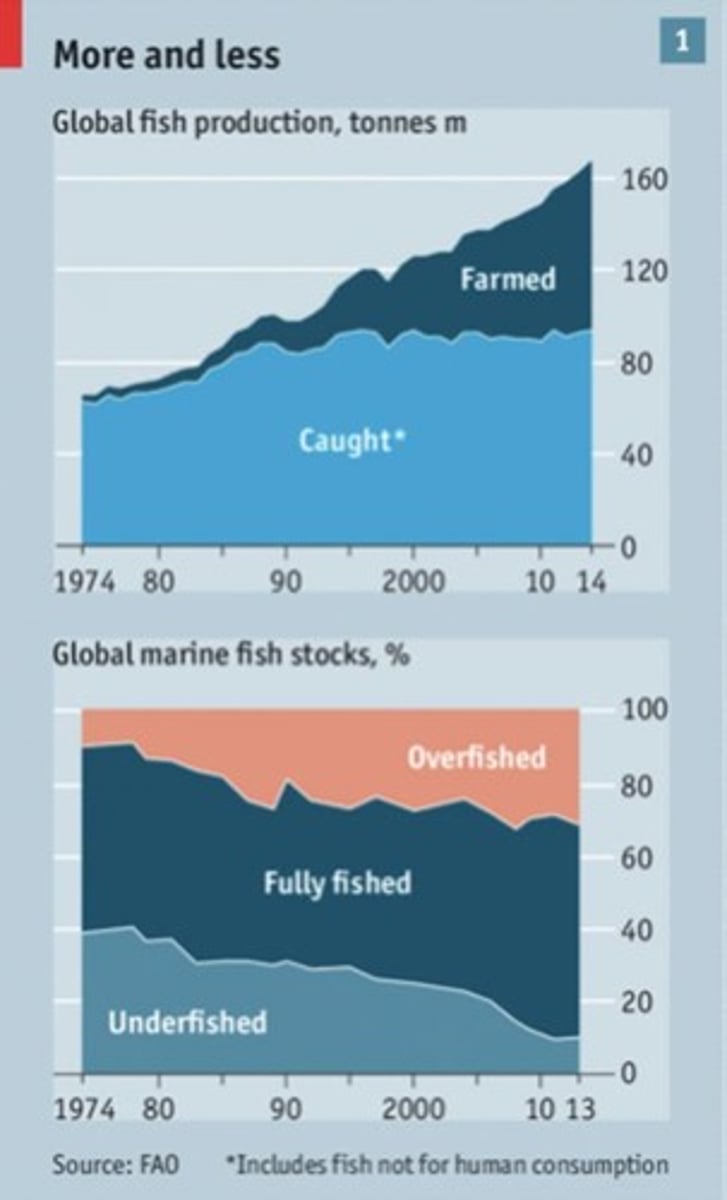
Sustainable yield
The harvest of a specific (self-renewing) natural resource.
Formation of fossil fuels
Dead organisms (like plankton and plants) settle on the seafloor and get buried under layers of sediment. Over time, more sediment builds up, increasing pressure and temperature. After millions of years, heat and pressure transform the organic material into fossil fuels such as oil, coal, or natural gas.
Increase in ocean mining
Problems associated with ocean mining impact ocean carbon.
Types of renewable energy using the ocean
Wind energy, wave energy, tidal energy.
Desalination
The process of removing salts and other minerals from water.
Best fish population size for harvesting
Medium.
What has kept the number of wild fish caught from increasing since 1985
The fish were farmed.
Anthropogenic impacts
The effects of human activities on the marine environment.
Direct effects on marine habitats
Dredging, landfilling, and even the use of explosives destroy habitats.
Percent of world's reefs lost or at high risk
More than a quarter of the world's reefs.
Ocean acidification
Caused by an increase in atmospheric carbon dioxide.
Cause of depletion of oxygen in the marine environment
Ocean acidification.
Stressors for corals
Temperature changes.
Types of pollutants in the ocean
Direct and indirect.
Eutrophication
Excessive amounts of nutrients that encourage too much algal growth.
Disease caused by shellfish from sewage infested waters
Intestinal infections.
Source of most polluting oil in North America
Stormwater and river runoff, fuel from small boats and jet skis, and fuel jettisoned by planes.
Impact of oil spills on marine mammals and birds
Oil spills affect their feathers or hair which affects their ability to maintain the thin layer of warm air needed for insulation.
How oil from oil spills can be broken down
Two types of substances commonly used are (1) dispersing agents and (2) biological agents.
Biological magnification
Animals absorb and accumulate the pesticides and other toxins in the organisms they eat, making their internal concentration of toxins higher than in their food supply.
What makes most solid waste in the ocean
Plastics.
Definition of endangered organism
When in immediate danger of disappearing.
Effectiveness of preventing habitat loss vs restoring destroyed habitats
It is more effective to prevent habitat loss.
Artificial reefs
Everything from concrete blocks, discarded tires, toilets, scuttled ships, and a jet has been used to build artificial reefs around the world.
Coral bleaching
Signals stress in corals, usually from high temperatures, pollution, or salinity changes. It occurs when corals expel their algae (zooxanthellae), turning white. Corals can recover if conditions improve, but prolonged stress may lead to coral death.
Parts of a reef diagram
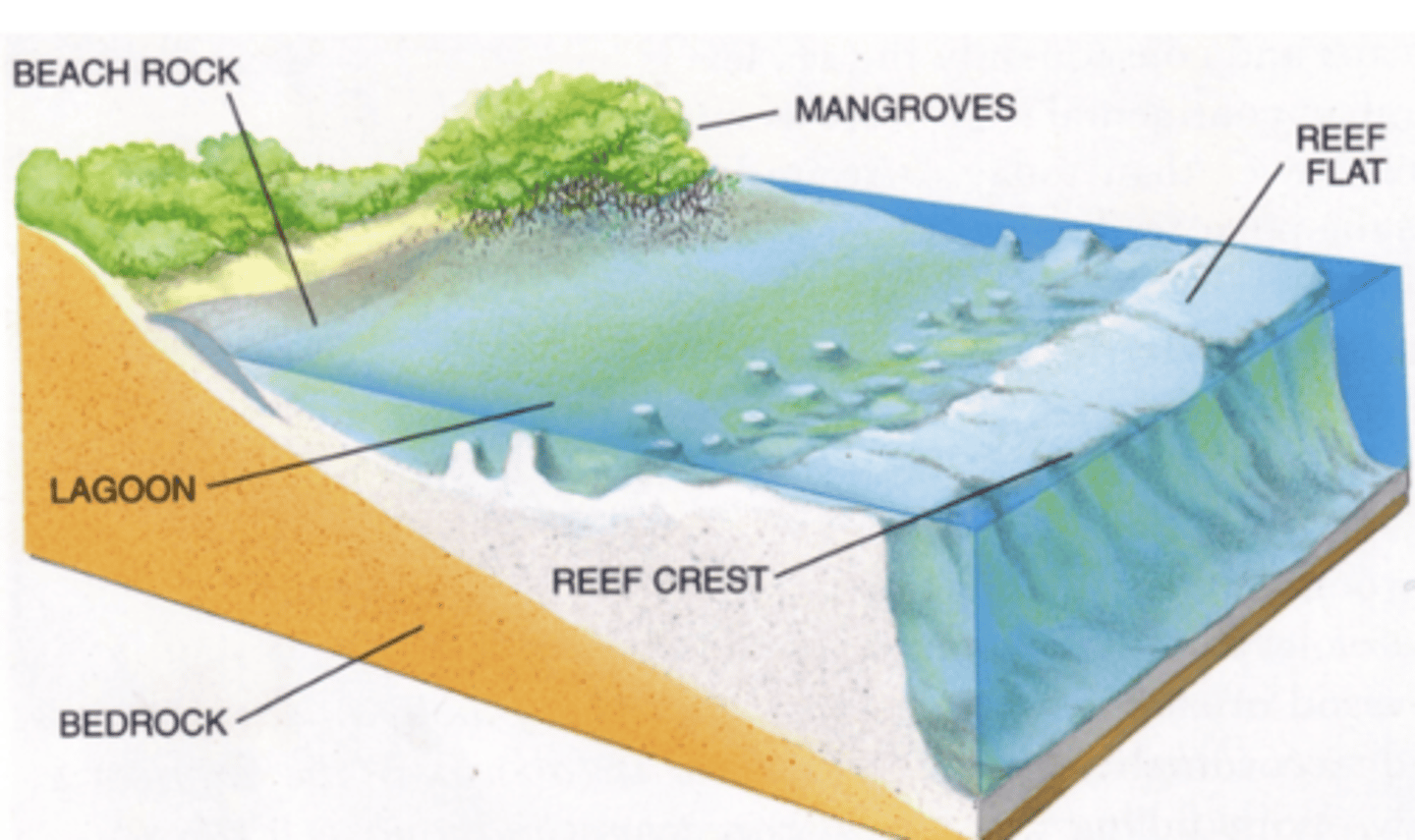
Dead organisms (Like plankton and plants) settle on the seafloor and get buried under layers of sediment

Over time, more sediment builds up, increasing pressure and temperature
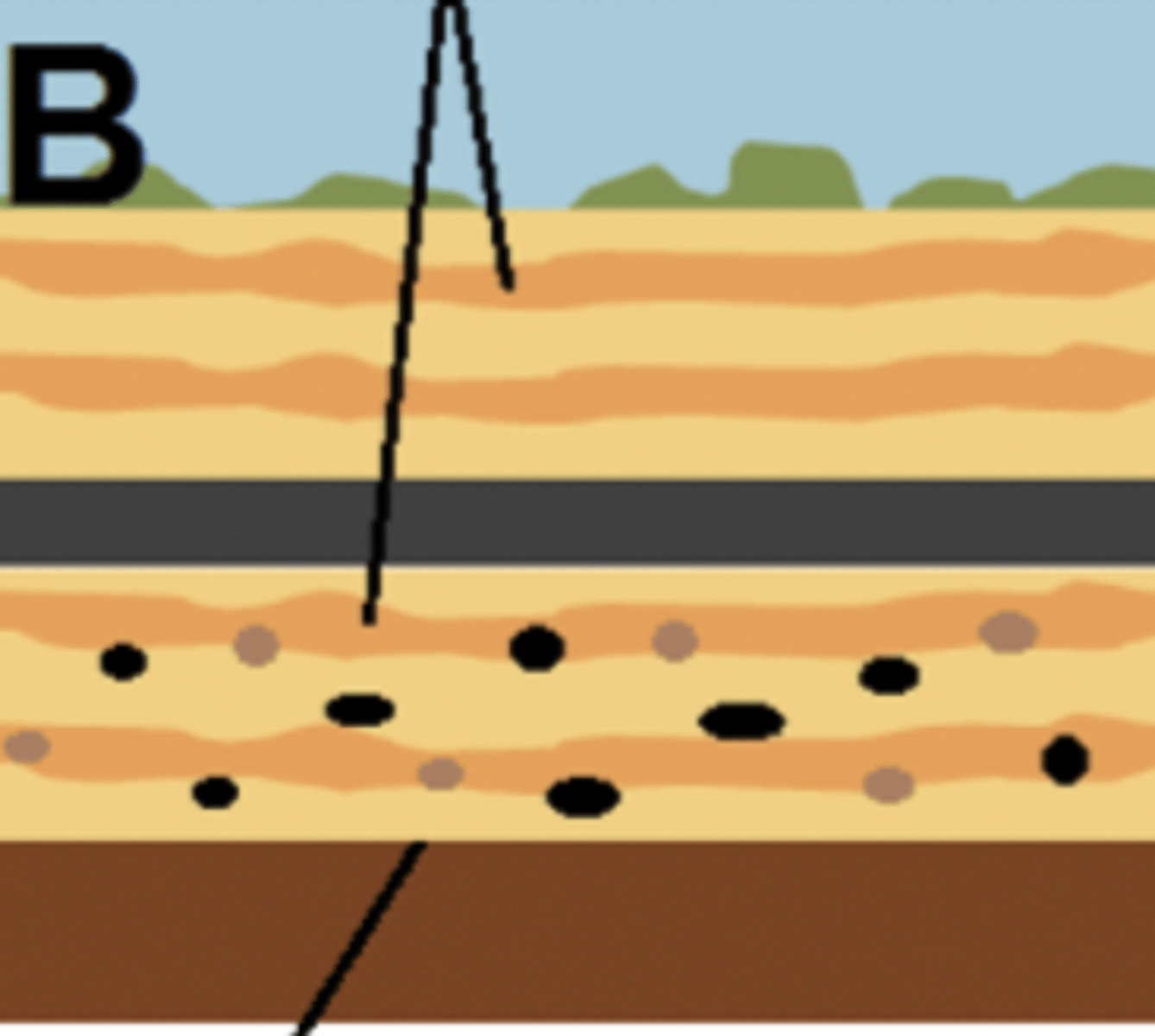
After millions of years, heat and pressure transform the organic material into fossil fuels such as oil, coal, or natural gas
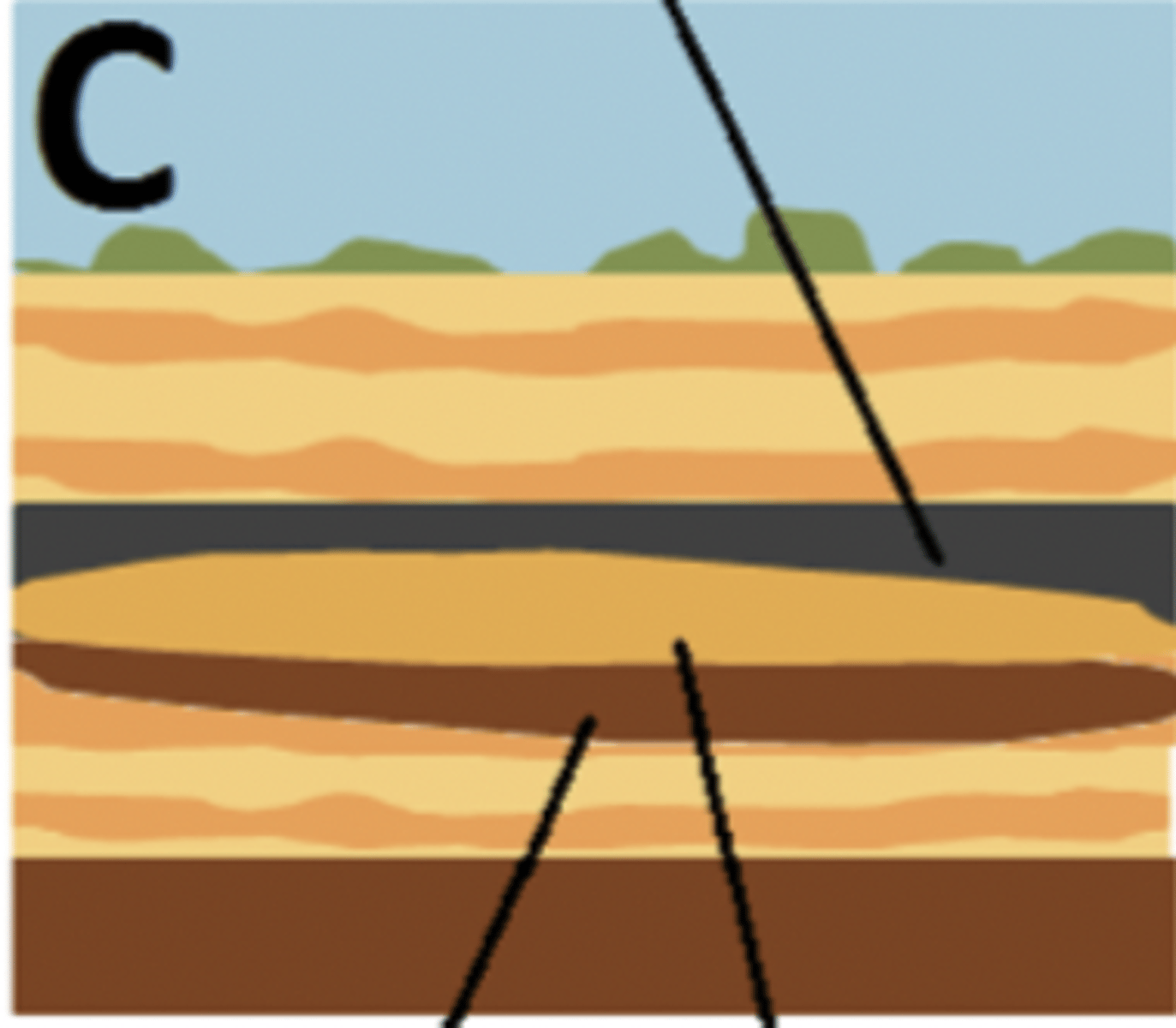
In the photo on the back of the card, what has kept the number of wild fish caught from increasing substantially since around 1985?
fish were farmed
